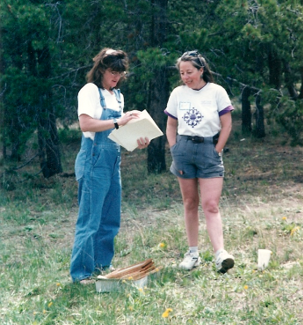Sustaining Critical Change Makers in Our Communities
By Alice B. Pugh
November 17, 2022
There are some who are not content to watch by the side-lines and must jump in and create. Passion, vision, and the ability to roll up their sleeves make up the secret sauce of non-profit founders. I was one such founder several years ago and now I often find myself working with nonprofit Executive Directors (ED) in my work at The Civic Canopy. Over the years, I’ve seen the potential of these incredible individuals to bring people together around a common vision to change their community, but I’ve also seen them burn out due to impossible expectations. To this, I offer an invitation to reimagine.
In the early years, the passion and vision are exciting and the potential to make change happen is real. Programs seem to sprout. There is never enough money nor hours in a day to make it all happen but happen it must for one with such a dream. The drive and determination are infectious and soon programs grow, money trickles in (although still not enough), and others who share the passion come to share their gifts. The non-profit grows and prospers. The vision never waivers, the hours pile up, and the responsibilities start mounting. Soon that beautiful dream needs timesheets to approve, policies to govern, grant reports, and accountability. An Executive Director has learned how to do it all and is driven to assure that the mission stays true. Soon time is pulled away from the nurturing soil of the ideals and the juggling begins.
Years go by. Staff and employees come and go, leaving their gifts behind. The dream becomes more tangible, and success follows so close. Stress also finds its way into objectives unmet and budgets so meager it is impossible to equitably pay for all the amazing work of volunteers and eager employees. So many demands pull an Executive Director from staff management to fund raising to board governance and still they hold the dream. That too is stressful, holding a vision for all.
Then, without intention, a structure that seems immutable is built. A Board of Directors is holding the ED accountable. A pyramid of power forms with the ED at the very tip with all the responsibility and holding tight to the all the reigns to assure it all gets done. There is not time to spare, and even thinking about getting help takes more of that away. A feeling of being overwhelmed takes hold, yet still the ED keeps those sleeves rolled up and keeps things moving forward, onward toward the potential.
Decades may in fact pass and in a small town your identity gets tied to your job, for it is so much more than a job. I have heard many ED’s call their organization their third child. Never is an ED “off duty” in a small rural community. There is an expectation to show up for everything and be everything for everyone. Then slowly the burnout settles in and the precious time you have leaves no exit. How does one plan for their own succession when that beautiful dream still shines?
Perhaps it is the structure that has led so many down this path. Funding a nonprofit’s programs requires a puzzle of grants, donations, and fundraising. Foundations dole out grants in one-year increments, making long term planning challenging. Connecting to donors with wealth is also an obstacle in impoverished communities. Could it be time to re-think our non-profit structures to be more collaborative and communal? What would it look like to have staff and partners be a true team all rowing in the same direction and sharing responsibility and purpose?
The determination to take an idea and create a non-profit to bring the dream to fruition could be focused to transform the very structure of non-profits. The drive of a visionary board and executive can be used to take control of how the work is done. What are the essential functions that allow the mission to be accomplished? Some examples are accounting, human resources, fund raising, project/program development, and organizational health. Traditionally we think of this as the sole domain of the ED, but it is possible to invite consumers and employees to participate in the mandates of each function and contribute lived experience, expertise, and accountability. This transforms power dynamics from recipient to stakeholder and provides a career path within an organization. This also shares responsibility freeing each person to contribute their passion to the whole. Establishing equitable structures at the inception of a nonprofit takes no more time than navigating the traditional policies and procedures of traditional organizations. Let the innovation begin.


